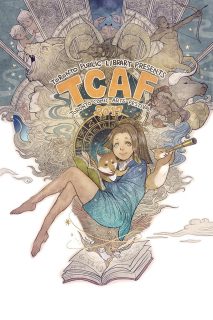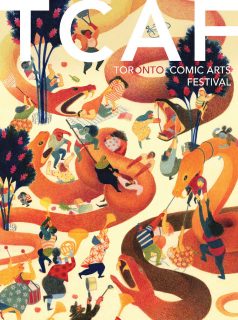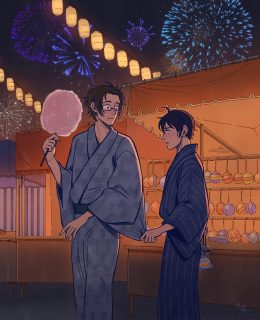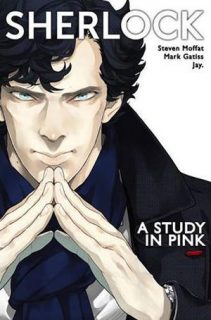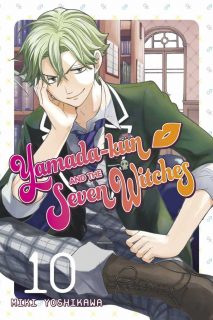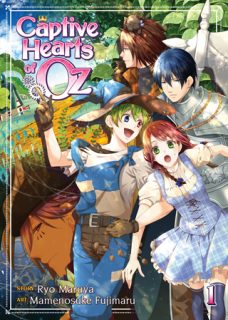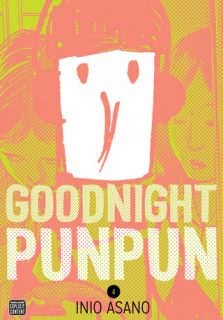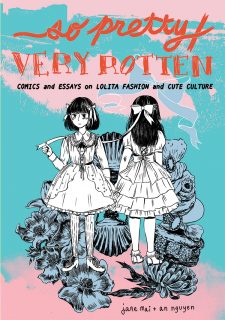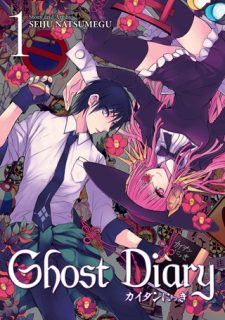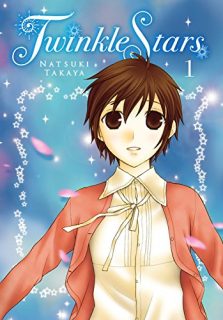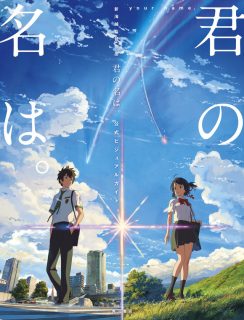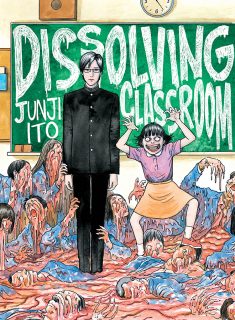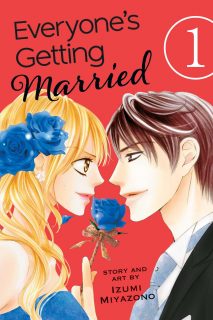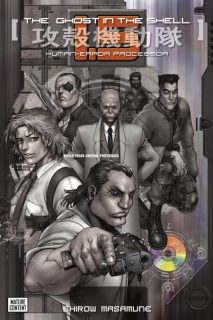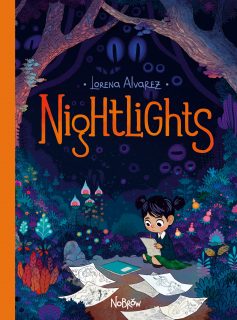I didn’t actually realize it until I started writing up my random musings for the 2017 Toronto Comic Arts Festival (TCAF), but this year was actually my five-year TCAF anniversary! For the first two years I coordinated the trip with a friend (a different one each year), but for the last three years my TCAF adventures have been combined with a Toronto family vacation. 2017’s TCAF trip leaned a little more heavily towards family activities than in years past, but I still found the opportunity to enjoy what the festival had to offer. And seriously, TCAF has a tremendous amount to offer. It’s the only comics-related event that I currently attend, and it’s absolutely worth challenging my social anxiety and general awkwardness.
Although there are TCAF-related events throughout May, the festival-proper usually takes place on Mother’s Day weekend which was May 13th and 14th this year. As mentioned, much of the emphasis of my trip this year was on family vacationing. We made a long weekend of it, leaving on Thursday and returning on Sunday. On Thursday, after treating ourselves to breakfast at a favorite local restaurant and taking the young one to a weekly language development play group (which I hadn’t actually had the opportunity to visit before since I’m usually working when the class is held), the four of us (three adults and a toddler) piled into the car on headed out.
If we were to drive straight through from where we live in Michigan to Toronto, it would take about four and a half hours but we arrived a little over six hours after we left. Things always seem to take a bit longer when kids are involved, not to mention the fact that we also happened to stop for a leisurely picnic lunch once we were in Canada and well on our way. I don’t remember exactly what time we finally pulled into Toronto, but it was late enough that I missed the book launch party for Jane Mai and An Nguyen’s newest collaboration So Pretty / Very Rotten: Comics and Essays on Lolita Fashion and Culture which I had hoped to attend. Instead, we all took our time settling into the room for our stay and then ordered tasty takeout from a place that was a surprising combination of pizzeria and Asian fusion.
On Friday, the whole family spent most of the day at the Ontario Science Centre, which was fantastic. We mainly focused on the interactive areas geared towards younger ages and so certainly didn’t see everything there was to see; I would like to go back sometime and explore even more of the centre because we all had a great time. After resting up in our room for a bit, we eventually made our way down to The Distillery Historic District for dinner, drinks, and other diversions. In the past, Friday night would have been the night that I would take off for the Sparkler Monthly mixer, but this year that party was held on Saturday evening instead. (Sadly, this also meant Sparkler’s party conflicted with the annual queer mixer.)
After spending most of Thursday and Friday with the family, I was mostly off on my own on Saturday enjoying the first day of TCAF. As in years past, I started my morning off wandering the exhibitor areas before they got super crowded. I mostly explored the Toronto Reference Library, which had three floors of exhibitors this year, but eventually made my way to the exhibitors situated in the Masonic Temple as well. I wasn’t quite as social as I have been at previous festivals, but I did make a point to at least say hello to the creator’s that I recently supported through Kickstarter who were at the festival. I spent a fair amount of time going through all of the exhibitor’s online portfolios before arriving in Toronto, making notes to myself of the tables that I wanted to be sure to stop by, but in the end I really did try to see everything there was to see. One of the things I love about TCAF is the wide variety of comics at the event, but I especially appreciate the number of queer creators and the amount of queer content present.
In addition to all of the phenomenal exhibitors, TCAF also has a strong lineup of panels, workshops, and creator spotlights. As usual, it was a tremendous challenge deciding which events I wanted to go to, especially as so many of the conflict with one another. In the end I settled on six, all but one of which were held on Saturday. There were definitely others that I wanted to attend, too, but for one reason or another (such as waking up with a migraine on Sunday morning or a cranky toddler) I wasn’t ultimately able to fit them all into my schedule.
Since I’m a musician on top of being a huge fan of comics, one of the panels that immediately caught my interest was “Sounds and Vision: Music in Comics,” moderated by Phillipe Leblanc, which explored how artists portray and convey music and sound in a visual medium. Although I haven’t actually read any of their comics (yet), I did recognize the panelists by name–Dave Chisholm, Nick Craine, Anya Davidson, Sandrine Revel, and Eric Kostiuk Williams. All of the creators on the panel had at least some musical background, formal or otherwise (Chisholm even has a doctorate in jazz trumpet), and consider music to be one of their passions. In some ways the two artforms, music and comics, are incompatible since each one requires so much time to master as an artist, but they can still be brought together. If nothing else, creators’ experiences as musicians can inform and influence the stories they want to tell. Effectively incorporating music into a comic requires more than just putting music notes on a page. As Chisholm pointed out, musical notation isn’t really music either–it’s simply ink on paper, a visual shorthand (much like comics themselves). In order to convey the intended feeling of the music, comic creators must instead rely on page and panel design to capture a sense of tempo, movement, and flow. Creative use of typography can also be effective, especially when lyrics are involved, and imaginative onomatopoeiae can serve as a device to form a visual soundscape. Often a literal representation of music isn’t what is demanded by a narrative, it’s the emotional resonance and impact of that music that needs to be seen, whether it’s the focus of a comic or simply being used as a background element to help set a scene.
After spending a little more time browsing the exhibitor areas, the next panel that I attended was simply titled “Sports!” which included Michael Nybrandt, Ngozi Ukazu, Sonam Wangyal, and Jarrett Williams as panelists and RJ Casey as a moderator. While in Japan sports comics have been immensely successful, the subgenre hasn’t thrived in the same way in the North American comics industry. Although there have been some independent sports comics with impressive followings, such as Ukazu’s Check, Please!, in general sports comics continue to be a hard sell for many major publishers. In the 1990s there were some unsuccessful mainstream attempts that basically tried to turn sports comics into superhero narratives rather than focusing on the underlying human story, something that didn’t work well at the time. There’s also the question of audience since there is a lingering and inaccurate stereotype that “nerds don’t like sports.” (Ukazu commented that it might actually be more difficult to sell sports comics to sports fans than to comics fans.) Sports stories provide ready-made and easily understood narratives which allow the incorporation and exploration of other subjects such as politics, religion, and performance of gender, making those issues more acceptable or palatable for readers. Emotional highs and lows are inherent to the stories, often directly tied to the athletes’ successes and failures in competition. Sports comics can risk becoming repetitive since the most basic story arc is the often same–someone will win and someone will lose–but while the ending may be already be determined, how the comic arrives at that ending is not. Changing the implications of winning and losing can introduce new dynamics and not all the conflict and drama has to happen within the context of the sport itself.
While the first two panels I went to were both held at the Stealth Lounge at The Pilot, my next three panels were located at another of TCAF’s primary event locations, the Toronto Marriott Bloor Yorkville Hotel which allows for larger gatherings. It’s a good thing, too. Glen Downey, who was moderating “Creating While Depressed,” noted that it was one of the most well-attended TCAF panels with which he has been involved. The subject matter being discussed appeared to strike a very personal chord with many of the people in the audience, myself included. The panelists–Meredith Gran, Tara Ogaick, Meredith Park, and Shivana Sookdeo–were all very candid and open, sharing their own experiences as creators who have to carefully balance their mental health with their creative work. They talked about how damaging the idealized stereotype of the “tortured artist” is and how the romanticized portrayal of depression found in popular culture is often vastly different from actual experience. In reality, people with depression are creating despite depression rather than because of it. For them, comics can be an outlet for expression and a way to alleviate some of the symptoms of depression, but at their lowest points it may be impossible for them to produce any work at all. It is at those times when communication and honesty are particularly crucial in order to clearly delineate limitations and establish realistic expectations not only for themselves but for the people with whom they might be working. The panelists also emphasized the importance of finding a supportive, close-knit community. Although they were specifically speaking as artistic creators with depression, I found that their experiences strongly resonated with my own and could be more broadly relatable.
My fourth panel of the day was “21st Century Webcomics,” featuring Michael DeForge, Blue Delliquanti, Priya Huq, Matt Lubchansky, and moderated by Tom Spurgeon. I don’t actually follow as many comics online as I used to–I find reading digital content difficult and/or frustrating for a wide variety of reasons–but I am still a huge supporter of webcomics, frequently buying print editions if they exist. As with any medium, webcomics have evolved over time especially as advances in the creation of digital artwork have also been made. Likewise, the relationship between webcomics and print comics have changed and there is less of a sense that they are at war these days. Instead, webcomics are often used to support their print equivalents. Because they are online, webcomics are inherently more discoverable and more widely accessible which helps to build an audience and further promote a creator’s work. Webcomics can also give a creator the opportunity to experiment with new methods and formats of expression that simply aren’t realistically feasible or even possible in print, such as the use of infinite canvass, animation techniques, or interactive elements. Creators have a tremendous amount of freedom when it comes to webcomics, allowing personal or experimental works to be produced and distributed that more traditional or mainstream comic publishers might initially be reluctant to take a risk on. However, while it was hoped that the Internet would allow creators to more directly deliver their content to readers and flatten out publishing hierarchies (which to some extent has occurred), the reality is that there has been a rise in intermediaries. More and more, creators find they frequently have to rely on multiple external systems and platforms like Kickstarter, Patreon, and social media to sustain their work.
“LGBTQ Comics Abroad,” moderated by Justin Hall, was the one panel that I wanted to be sure to make it to above all others not just because the subject matter had to do with queer comics but because Gengoroh Tagame was participating. (Even if someone isn’t a fan of Tagame’s works, his immense historical knowledge and experience as a gay comics creator makes his panels well-worth seeking out.) The other panelists included A.C. Esguerra, Molly Ostertag, Tommi Parrish, and Martina Schradi. Anne Ishii was also there, technically to assist with interpretation for Tagame, but she also had her own thoughts and experiences to bring to the discussion. The panelists talked about their work and the state of queer comics within their own countries (Japan, United States, Australia, and Germany) but also the challenges presented when considering international audiences. Queer identities are formed differently from culture to culture, and some of the nuances of those differences can be difficult to convey or translate, however there are still some shared and common experiences that are not limited by borders; social mores and contexts will often vary, but universal themes can still be found. The online environment has presented an opportunity for queer comics to be successful in ways that are currently difficult through traditional publishing, although the mainstream comics industry has been slowly making progress. The Internet allows for an unprecedented ease of global access to and distribution of queer content; it has been possible for numerous communities and support networks to be established which aren’t limited by geographic boundaries. But along with the good, there is also the bad–the piracy, scanlations, and extreme levels of fan entitlement present online can be hugely damaging.
As mentioned, Saturday night I went to the Sparkler TCAF Mixer. I brought the little one along with me to allow the family’s other two adults to have a child-free dinner date. A good time was had by all and I had the chance to catch up with not only the Chromatic Press/Sparkler Monthly folks but some of Seven Seas’ people as well. There’s a bit of an overlap between the two groups even though the demographics of each company’s audience are currently the inverse of each other. (Interesting tidbit: According to a recent Sparkler Monthly survey, while women form the core readership, at present Chromatic Press has more nonbinary readers than male readers.) Expect some really great things and exciting announcements to come from both publishers in the near future.
Sunday ended up being a much shorter day than was originally planned (I was really hoping to attend the So Pretty / Very Rotten discussion on Lolita culture at the Japan Foundation, for one). However, I and one of my partners were able to at least make it to The Pilot for the panel “Looks Good Enough to Eat: Comics and Food” before we all headed back to Michigan. We sadly missed out 2016’s food comics panel, so we were particularly happy to be there this year. Perhaps unsurprisingly considering my well-known love of food comics, I was already familiar with the work of most of the panelists: Sarah Becan, Emily Forster, Robin Ha, Jade Feng Lee, and Kat Verhoeven. Along with moderator Lauren Jorden, the group discussed what appealed to them about creating and reading comics that prominently feature or incorporate food. The subgenre of food comics is actually quite diverse, including comics explicitly about food (recipe comics, autobiographical works, or journalistic reviews) as well as comics that use food as a theme or aesthetic. Everyone has to eat, which can make food comics particularly accessible; it’s a shared experience that can serve as a gateway into comics. Food is a multisensory experience, so it can be challenging when working in a medium that primarily relies on one. However, an important part of eating is the visual experience, so to that extent comics are a natural fit. Comics can evoke a feeling or mood that can’t be captured in the same way with photography or other visual artforms. Often there is a strong emotional component to food comics. Even when the subject matter is specifically about food, food itself isn’t just food–it’s history, community, culture, relationships, and personal expression. And comics can be all of those things, too.
And with that, and after one last tour through the exhibitor areas, the whole family prepared to depart for home. Though I didn’t end up doing everything that I had originally planned or hoped to do, but I still had a fantastic trip. Toronto is a terrific city and TCAF is a phenomenal festival. However inadequately, I’ve tried to convey some of that greatness here by highlighting a little of what I learned and experienced. However, there’s so much more that I could have (and perhaps should have) written about because there’s so much more to the festival. I definitely plan on attending TCAF for the foreseeable future.

